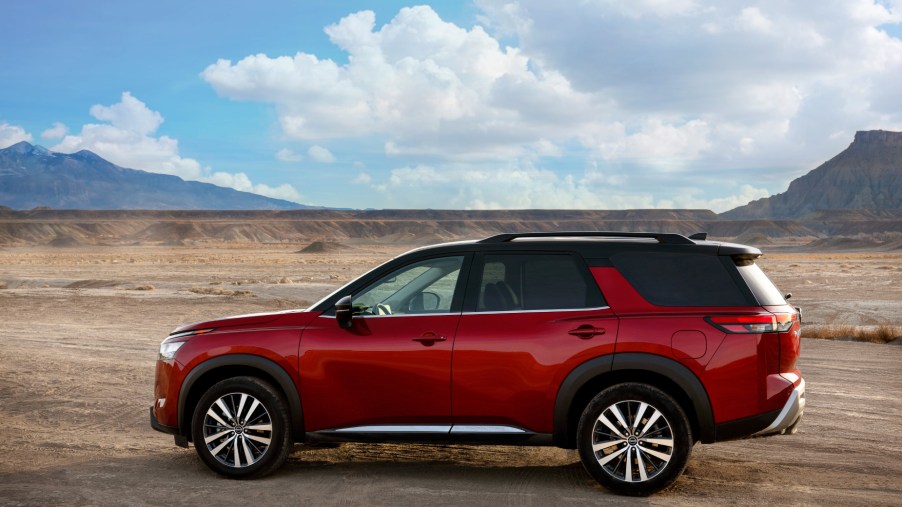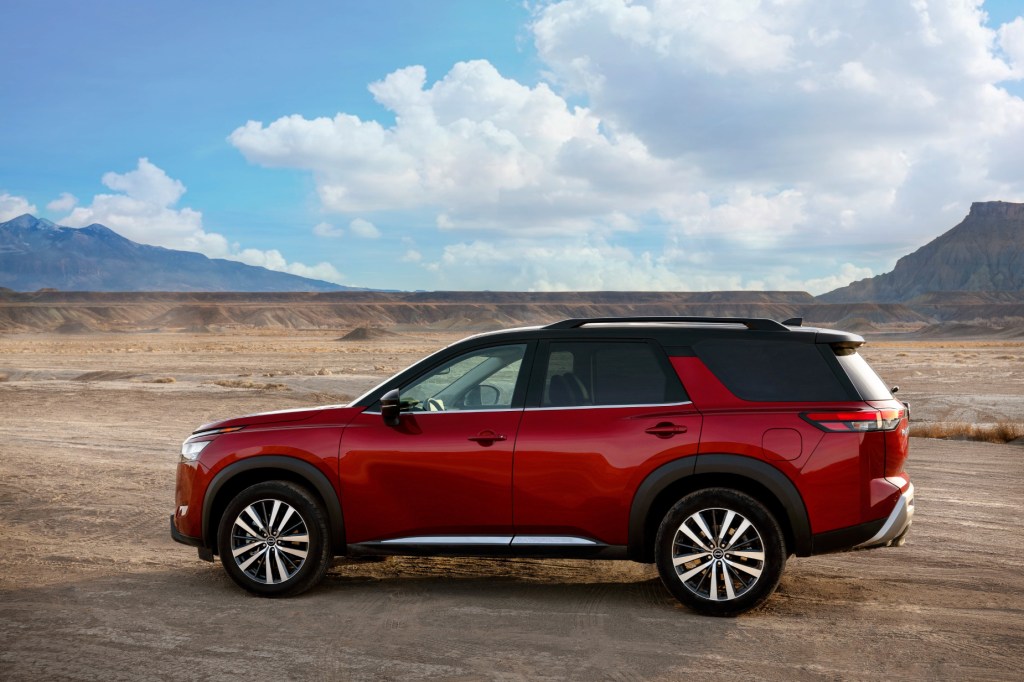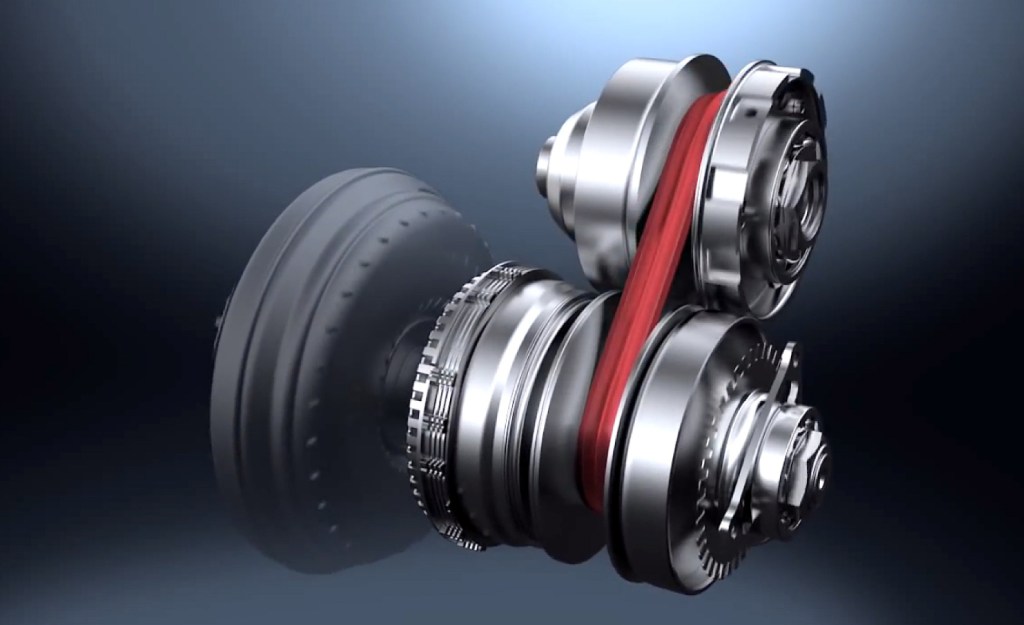
Is Nissan’s Xtronic CVT Going Xtinct?
Nissan helped lead the charge into transmission innovation. However, now there are signs that Nissan might abandon its Xtronic CVT in favor of an old-school system.
The Japanese automaker recently revealed the details of the fully redesigned 2022 Nissan Pathfinder. Many salivated over the three-row SUV’s new rugged look. However, automotive enthusiasts noticed what the vehicle didn’t have – a continuously variable transmission (CVT.)
Is Nissan’s latest creation a sign of things to come, or is it merely a one-off engineering choice? Let’s take a deeper dive into how Nissan is designing its newest models and what a CVT actually does.
Nissan X’ed out the Xtronic CVT on the 2022 Pathfinder

The aged, current-generation Nissan Pathfinder is a somewhat disappointing three-row SUV. It lacks the nameplate’s rugged heritage and drives more like a minivan than an SUV that can take on off-road trails.
That’s why it’s no surprise that Nissan wanted to revitalize this vehicle for the new model year. The automaker took inspiration from the past, giving the 2022 Nissan Pathfinder an edgier design. However, it also brought an old-school approach with the SUV’s mechanical components.
The automaker first equipped the Pathfinder with a CVT for the 2013 model year, and the SUV has utilized one ever since. That is until now.
Nissan announced that the 2022 Nissan Pathfinder features a new nine-speed automatic transmission. This system is mated to a 284-hp 3.5-liter engine and a front-wheel-drive system. Four-wheel drive is available for those who want more traction or plan to take this SUV off-roading.
Whether or not the switch from a CVT to an automatic transmission is a step forward or backward depends on who you ask. Before making a judgment, you must first understand the differences between these features.
How does a CVT differ from an automatic or manual transmission?
Casual drivers are mostly familiar with automatic and manual transmissions. However, your car might actually use a CVT, and you might not even realize it.
A CVT is similar to an automatic transmission, as you don’t have to shift gears yourself. However, it works differently than a conventional transmission.
Nissan says its seamless Xtronic CVT system makes “the vehicle perform as though it has a variable gear for every driving situation.”
Car and Driver provides an extremely in-depth explanation about the differences between a CVT and a traditional automatic transmission.
There are two key takeaways we should know. A CVT tends to run smoother and generally achieves better fuel efficiency than an automatic.
However, CVTs are typically less sporty – much to the dismay of automotive purists. Plus, these new-age transmissions can have a loud “droning” sound and can be more expensive to repair.
Nissan makes one of the best CVT systems on the market
Many drivers are quick to criticize vehicles that come with a CVT. However, Nissan’s Xtronic CVT is one of the more revered transmissions available today.
Most automotive publications generally lambasted the 2020 Nissan Pathfinder. However, the SUV’s transmission was one of its bright spots.
For example, the U.S. News & World Report’s review of the 2020 Pathfinder said that the SUV’s CVT “operates smoothly behind the scenes, which isn’t always the case with this type of transmission.”
Is this the end for Nissan’s Xtronic CVT?

While the all-new 2022 Nissan Pathfinder will no longer carry a CVT, that doesn’t mean Nissan will ditch this transmission on other models.
The automaker also revealed the redesigned Frontier alongside the Pathfinder. And this small truck also lacks a CVT. However, manufacturers typically only equip pickups with a manual or automatic transmission.
Plus, many of the Pathfinder’s more successful competitors, such as the Kia Telluride and Chevy Traverse, also use automatic transmissions. So, looking at larger three-row SUVs and trucks isn’t a great indication of the future of Nissan’s Xtronic CVT system.
Instead, we should turn our attention to Nissan’s smaller vehicles. Most of the brand’s most popular models, such as the Rogue compact SUV and Altima midsize sedan, utilize a CVT.
So, there’s no need to believe that Nissan Xtronic CVT is dead until it stops using it on these vehicles.


